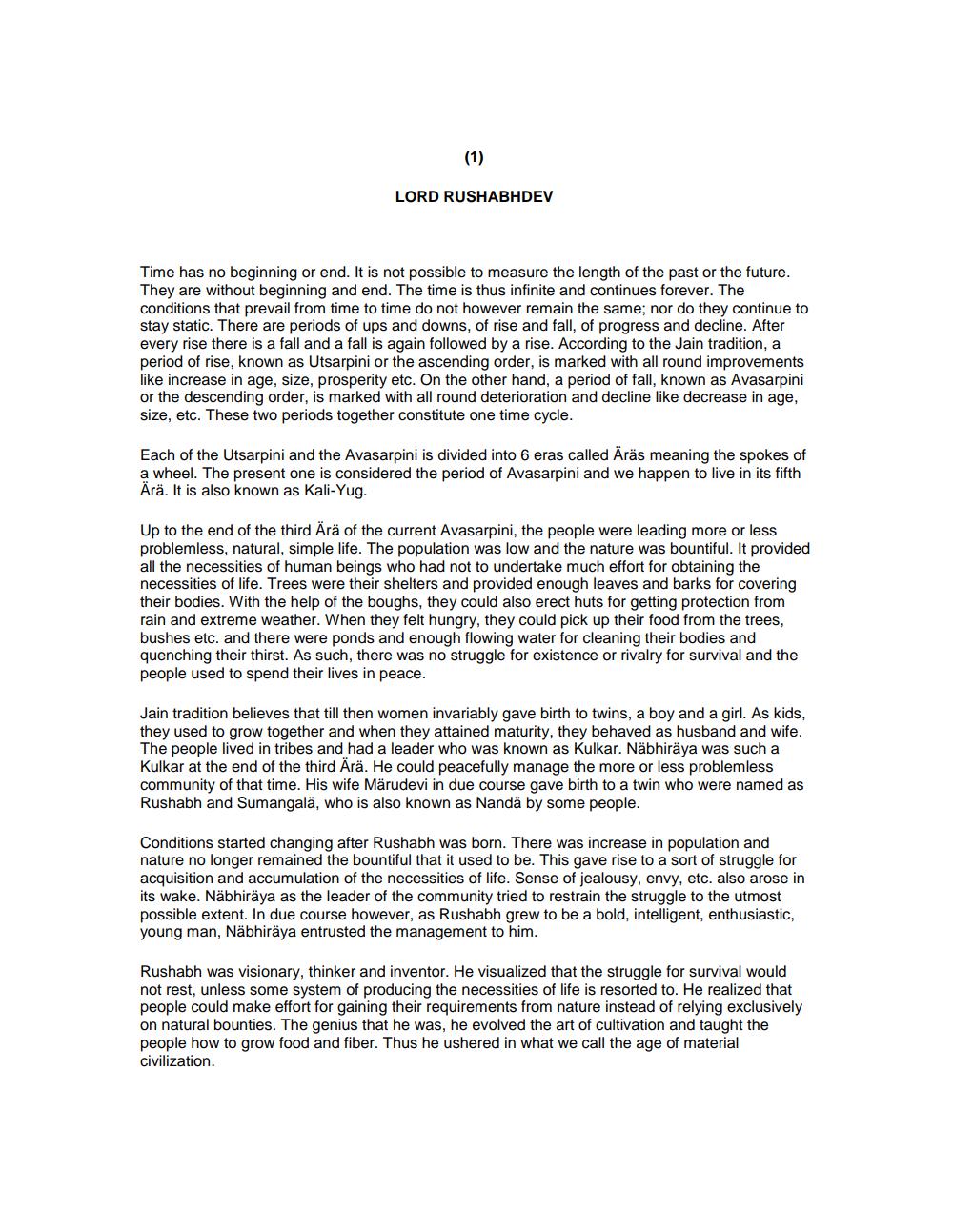Book Title: Jain Story Book Author(s): Manu Doshi Publisher: Manu Doshi View full book textPage 4
________________ LORD RUSHABHDEV Time has no beginning or end. It is not possible to measure the length of the past or the future. They are without beginning and end. The time is thus infinite and continues forever. The conditions that prevail from time to time do not however remain the same; nor do they continue to stay static. There are periods of ups and downs, of rise and fall, of progress and decline. After every rise there is a fall and a fall is again followed by a rise. According to the Jain tradition, a period of rise, known as Utsarpini or the ascending order, is marked with all round improvements like increase in age, size, prosperity etc. On the other hand, a period of fall, known as Avasarpini or the descending order, is marked with all round deterioration and decline like decrease in age, size, etc. These two periods together constitute one time cycle. Each of the Utsarpini and the Avasarpini is divided into 6 eras called Äräs meaning the spokes of a wheel. The present one is considered the period of Avasarpini and we happen to live in its fifth Arä. It is also known as Kali-Yug. Up to the end of the third Arä of the current Avasarpini, the people were leading more or less problemless, natural, simple life. The population was low and the nature was bountiful. It provided all the necessities of human beings who had not to undertake much effort for obtaining the necessities of life. Trees were their shelters and provided enough leaves and barks for covering their bodies. With the help of the boughs, they could also erect huts for getting protection from rain and extreme weather. When they felt hungry, they could pick up their food from the trees, bushes etc. and there were ponds and enough flowing water for cleaning their bodies and quenching their thirst. As such, there was no struggle for existence or rivalry for survival and the people used to spend their lives in peace. Jain tradition believes that till then women invariably gave birth to twins, a boy and a girl. As kids, they used to grow together and when they attained maturity, they behaved as husband and wife. The people lived in tribes and had a leader who was known as Kulkar. Näbhiraya was such a Kulkar at the end of the third Arä. He could peacefully manage the more or less problemless community of that time. His wife Märudevi in due course gave birth to a twin who were named as Rushabh and Sumangalä, who is also known as Nanda by some people. Conditions started changing after Rushabh was born. There was increase in population and nature no longer remained the bountiful that it used to be. This gave rise to a sort of struggle for acquisition and accumulation of the necessities of life. Sense of jealousy, envy, etc. also arose in its wake. Näbhiraya as the leader of the community tried to restrain the struggle to the utmost possible extent. In due course however, as Rushabh grew to be a bold, intelligent, enthusiastic, young man, Näbhiraya entrusted the management to him. Rushabh was visionary, thinker and inventor. He visualized that the struggle for survival would not rest, unless some system of producing the necessities of life is resorted to. He realized that people could make effort for gaining their requirements from nature instead of relying exclusively on natural bounties. The genius that he was, he evolved the art of cultivation and taught the people how to grow food and fiber. Thus he ushered in what we call the age of material civilization.Page Navigation
1 2 3 4 5 6 7 8 9 10 11 12 13 14 15 16 17 18 19 20 21 22 23 24 25 26 27 28 29 30 31 32 33 34 35 36 37 38 39 40 41 42 ... 90
